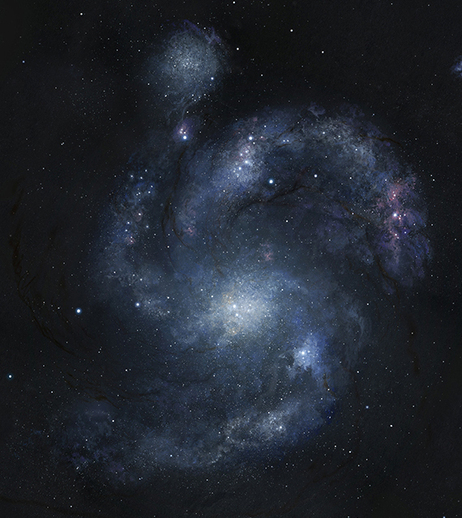Please note: Osher Rainforest will be closed for maintenance Jan. 14–16.
Science News
Rare Spiral Galaxy
July 19, 2012
by Alyssa Keimach

It is truly the right time to be looking at the sky. Astronomers have discovered a rare occurrence.
Galaxies like the Milky Way are called grand-design spiral galaxies. We have many of these in the local Universe. These galaxies have clearly defined spiral arms and are organized into a spiral structure.
A newly discovered galaxy (named BX442) is peculiar because the galaxy is about 11 billion years old but also has a grand-design spiral shape. Spiral galaxies were previously thought to be nonexistent at this time.
How can we tell this is a unique galaxy? In astronomy, Doppler shift is used to detect whether a cosmic object is moving towards us or away from us. The light waves appear red if the object is moving away (Redshift), or blue if coming closer (Blueshift). Cosmic objects can have varying degrees of shifts. The new galaxy has a redshift of z = 2.18, indicating that it has a lot of energy—a condition favorable of clumpy galaxies.
Out of 306 galaxies surveyed with similar redshifts, BX442 was the only one with the iconic spiral structure. This galaxy has some explaining to do—conditions 11 billion years ago were too hot and violent for stars to align into a spiral. How did this galaxy form?
David Law at the University of Toronto and his colleagues are investigating this galaxy and have found two possible explanations. The first—the galaxy is in some sort of transition or merger where a spiral structure happens for an instant (relative to the age of the universe). This theory would explain why the type of galaxy has never before been detected; we have never been looking at the right place at the right time. The second theory—that the spiral pattern is very rare, but spiral galaxies could have formed by themselves in that epoch.
This is a very exciting time to study astronomy! The study is published today in Nature.
Image: Joe Bergeron/Dunlap Institute for Astronomy & Astrophysics
Alyssa Keimach is an astronomy and astrophysics student at the University of Michigan and volunteers for the Morrison Planetarium.